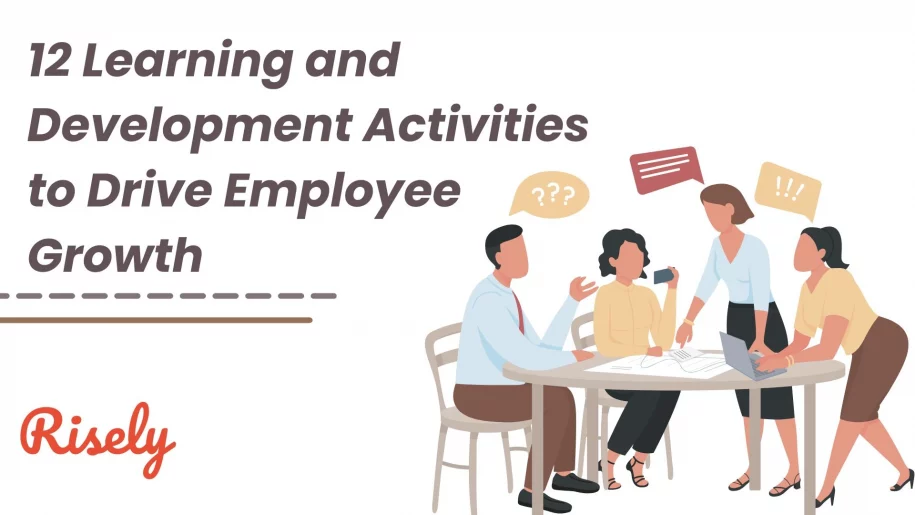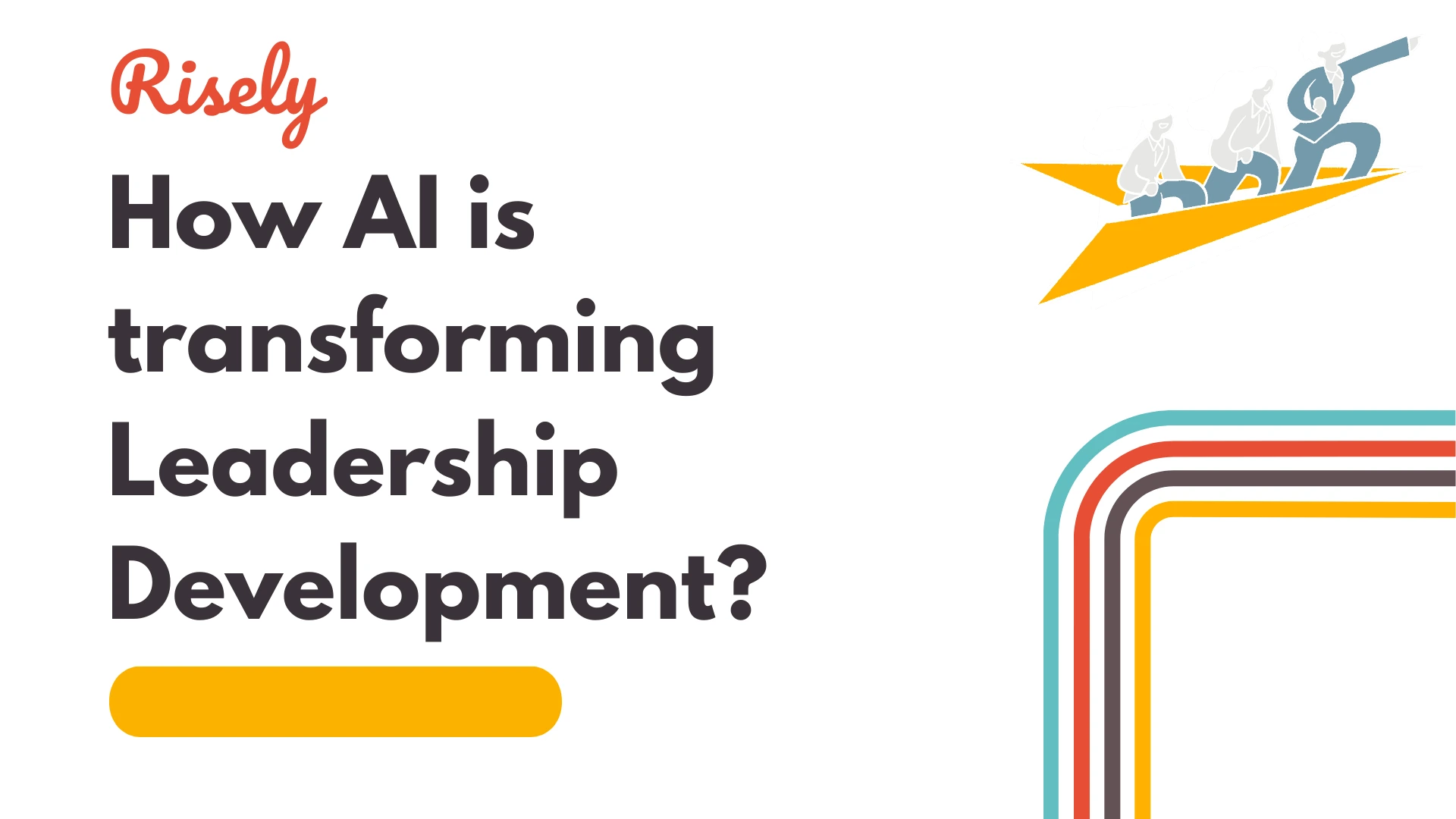12 Learning and Development Activities to Drive Employee Growth
As an HR or L&D leader, you realize that helping your people grow is more than just a question of skill building; it’s also about creating an environment where they can feel engaged, valued, and motivated to make their own mark on the bigger picture. This is all about the right learning opportunities opening doors for your team, not just in learning itself, but in developing confidence, being innovative, and driving real results for your organization. In this blog, we will explore 12 practical learning and development activities that will help equip your employees with necessary skills and power their growth on both personal and professional levels.What are the Key Learning and Development Programs for Modern Workforces?
Modern workplaces need learning and development programs that go beyond just technical skills. While job-specific training is important, L&D programs should also focus on building soft skills that drive collaboration, communication, and innovation. Some of the most impactful L&D programs include:- Leadership development: Preparing your future leaders to confidently take on bigger roles and lead with purpose.
- Compliance training: Ensuring your team stays up-to-date with industry regulations and standards.
- Soft skills development: Strengthening essential abilities like teamwork, communication, and problem-solving that are crucial for navigating today’s workplace challenges.
Onboarding and Continuous Training Programs
A strong onboarding program is key to helping new hires feel welcome and prepared. Beyond introducing them to your company’s culture, policies, and procedures, it should also offer role-specific training that gives employees a clear understanding of their responsibilities. When new team members feel supported from the start, they’re more likely to hit the ground running and contribute quickly. But it doesn’t stop there. Continuous training is just as important for keeping your team’s skills sharp and aligned with evolving business needs. Whether through workshops, seminars, or casual lunch-and-learn sessions, ongoing development ensures that employees stay engaged and are always learning. Regular training isn’t just about professional growth—it’s about keeping your team up to date with the latest industry trends, best practices, and tools to excel in their roles. By investing in both onboarding and continuous learning, you’re not only boosting performance but also showing your commitment to long-term employee growth.Leadership Development Initiatives
Developing future leaders is very important for the long-term success of any organization. Leadership development initiatives can come in different forms. These include mentoring programs, leadership workshops, or coaching sessions for executives. These programs should focus on developing key leadership skills. Important skills include communication, delegation, decision-making, and team management. Whenever organizations invest in leadership development, they end up creating a group of future leaders. These leaders will be ready to help their teams and face challenges ahead. Furthermore, these initiatives help with succession planning. They let organizations find and grow their internal talent for leadership roles without issues.12 Innovative Learning and Development Activities
Training for employees is no longer characterized by yawns and lengthy lecture-based sessions. The modern workplace uses the most effective interactive, real-world learning solutions that keep the learner active and retain knowledge better. As an HR or L&D leader, you’re likely always on the lookout for creative ways to make training more effective and enjoyable for your team. From hands-on workshops to gamified learning experiences and from peer-to-peer collaborative learning, training is designed to be engaging, participatory and practical. Role-playing in training for instance can be an effective way for the workforce to learn to deal with challenging situations, while interactive games make learning new concepts fun and memorable. Let’s dive into some of these innovative training activities and explore how they can energize your workplace while equipping your employees with the skills they need to succeed.1. Interactive Workshops and Seminars
As an HR or L&D professional, you can transform traditional training by introducing interactive workshops and seminars that engage employees and promote hands-on learning. These sessions go beyond passive listening, encouraging active participation and collaboration. To make the experience more dynamic, consider including:- Group discussions and brainstorming
- Real-world case studies and problem-solving
- Role-playing and simulations
- Interactive quizzes and polls
2. Team-building Exercises and Group Projects
Team-building exercises and group projects are powerful tools you can use to help employees improve their communication, teamwork, and problem-solving skills—all while keeping the learning fun and engaging. These activities bring teams together to work toward a shared goal, fostering trust and camaraderie. You can introduce activities such as:- Escape rooms
- Problem-solving challenges
- Outdoor adventures
- Creative group projects
3. Role-playing Scenarios for Real-world Problem Solving
Incorporating role-playing scenarios into your training programs can offer your team valuable, hands-on experience in a safe environment. These simulations allow employees to step into specific roles and tackle real-world challenges, such as resolving customer complaints, handling tough conversations, or collaborating on complex projects. In this digital era, options are also available online to practice role-playing, if one is shy. This interactive approach helps employees develop essential soft skills, including:- Problem-solving
- Communication
- Negotiation
- Conflict resolution
4. Debates to Fuel Critical Thinking
Organizing debates at work can be a dynamic way to foster critical thinking and deepen understanding of complex issues. By assigning employees a topic and dividing them into teams to argue different sides, you create an engaging platform for them to:- Research and analyze information
- Build and present strong arguments
- Think critically and challenge ideas
- Enhance their communication and presentation skills
5. Simulation and Gamification for Immersive Learning
Integrating gamification and simulations into your training programs can make learning both exciting and effective. Here’s how these techniques can enhance your training:- Gamification: Incorporating game-like elements such as points, badges, leaderboards, and rewards can boost motivation and engagement. Employees are more likely to participate actively and strive for improvement when they’re rewarded for their efforts.
- Simulations: These create a risk-free environment where employees can practice their skills without real-world consequences. This is particularly valuable for roles that demand quick thinking and decision-making in challenging situations.
6. Versatility Through Cross-Training
Engage your team with cross-training, allowing employees to develop skills beyond their primary roles. This fosters a culture of continuous learning and helps them adapt to changing job demands. Benefits of cross-training include:- Enhanced Flexibility: Employees can smoothly transition into different roles.
- Increased Engagement: Varied learning experiences boost motivation and satisfaction.
- Boosted Innovation: Exposure to different functions sparks new ideas.
7. Solving Case Studies
Incorporating case studies into your training can offer your team valuable hands-on experience with real business scenarios. By analyzing data, identifying problems, and crafting solutions, employees enhance their critical thinking and problem-solving abilities while gaining a deeper understanding of business strategy. When your employees tackle case studies, they can:- Apply their knowledge to solve real-world challenges
- Develop stronger analytical and problem-solving skills
- Explore different business areas and industries
- Improve their decision-making abilities
8. Brain Wrecking Quizzes and Polls
Engage your team by incorporating challenging quizzes and polls into your learning and development programs. These interactive tools make learning more dynamic and memorable for your employees. Quizzes and polls in your learning and development program facilitate the following for your team:- Participate actively and remember key concepts
- Engage in deeper thinking and problem-solving
- Receive immediate feedback on their performance
- Tailor learning experiences to different styles
- Enjoy friendly competition, boosting motivation
9. Three-Step Interviews for Deep Reflection
Implementing three-step interviews can offer your team a structured way to engage in deep reflection. This approach helps employees explore their experiences, recognize their learnings, and identify areas for improvement. This approach supports your employees by:- Gain insights into personal strengths and areas for improvement
- Share and understand diverse perspectives
- Support professional development and enhance self-discovery
- Boost motivation and engagement through regular reflection
10. Confidence Building Through Peer Teaching
Incorporating peer teaching into your mentorship programs can be highly beneficial for your team. It allows employees to share their knowledge and skills while also growing personally and professionally. When your team members engage in peer teaching, they:- Deepen their own understanding of the material
- Enhance their communication and presentation abilities
- Gain valuable experience in mentoring and leadership
11. Brain Storming to Stimulate Creativity and Idea Generation
Engaging your team in this learning and development activity ignites creativity and innovation. This technique not only gets people to work in unison but also utilize a compounded intelligence of the group. List of how brainstorming is beneficial to your team:- Brings out fresh ideas in innovative solutions
- Enhances teamwork and diversified ideas
- Gives out-of-the-box thinking
- Offers a way to share ideas in a comfortable spot.
12. Learning Circles to Foster Collaboration
Creating learning circles can be a fantastic way to enhance your team’s growth and collaboration. These small, informal groups allow employees to connect, share knowledge, and discuss topics that matter to them. Below is how learning circles can benefit your team:- Share insights and expertise related to their roles
- Explore common interests and tackle specific projects
- Collaborate on solving challenges and exchanging best practices
Why Is Learning and Development Crucial for Employee Growth?
Investing in your employees’ learning and development isn’t just another expense—it’s one of the smartest moves you can make for both your people and your organization. In fact, when you provide opportunities for professional growth, employees are more valued, motivated, and connected to their work. Be it workshops, cross-training, or group projects, a transparent learning and development program guarantees to employees the resources and skills they need to perform well and take up new responsibilities. While L&D sharpens technical skills, it also contributes to developing essential soft skills in the areas of communication, leadership, and problem-solving – always with greater impact in the long term. By fostering a culture of continuous learning, you’re showing your team that their growth matters. The result? Greater job satisfaction, stronger retention rates, and a more engaged, high-performing workforce that’s ready to meet whatever comes next. Learn more in this episode of RiseUp Radio featuring Janis Cooper, who heads Leadership and Staff Development at Best Friends Animal Society:Conclusion
In Learning and Development, helping employees grow is very important. Interactive workshops and brainstorming sessions are effective learning and development activities. Each one helps create a workforce that is knowledgeable and motivated. These L&D activities improve skills and encourage teamwork and critical thinking. Organizations should look at how these programs work by setting clear goals and getting feedback for ongoing improvement. By investing in L&D, businesses can see real benefits and better returns. They should adapt to new technologies and customize programs for remote workers to stay relevant and effective in today’s changing work environment.Are you confused about mixing fun with learning? Here’s a secret tool:
The 70-20-10 learning plan mixes informal and on-the-job learning with more structured initiatives. Grab Risely’s free template and build yours today.
AI and Leadership Development: Driving Synergy for Growth
AI and Leadership Development: Driving Synergy for Growth You know the frustration all too well. Your organization invests thousands in…
How Are AI Learning Platforms Transforming Leadership Development?
How Are AI Learning Platforms Transforming Leadership Development? As an L&D leader, you’re likely familiar with this frustrating reality: 82%…
5 Essential AI Skills for L&D Leaders
5 Essential AI Skills for L&D Leaders According to LinkedIn’s 2025 Workplace Learning Report(1), 71% of L&D professionals are now…
How to Create a Course with AI: A Guide for L&D Professionals
How to Create a Course with AI: A Guide for L&D Professionals According to a McKinsey survey(1), only 11% of…
Building an Ultimate Leadership Development Action Plan
How to Build a Leadership Development Action Plan? Having a strong Leadership Development Action Plan is more critical than ever…


